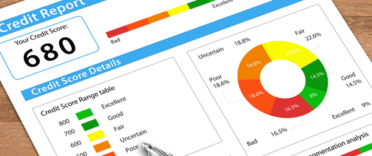 If you’re worried that you’re not saving enough into your pension, you’re probably right. While any amount you can pay into a pension is worthwhile and commendable, the reality is that most of us are still not saving enough to be able to maintain our current lifestyles once we retire. In this article, we look at how much you should really be saving into your retirement pot and the best ways to do it.
If you’re worried that you’re not saving enough into your pension, you’re probably right. While any amount you can pay into a pension is worthwhile and commendable, the reality is that most of us are still not saving enough to be able to maintain our current lifestyles once we retire. In this article, we look at how much you should really be saving into your retirement pot and the best ways to do it.
We also explain how you can consolidate all your existing pension pots into one pension plan with PensionBee, helping you save money on fees as well as making it easier to manage.
What is a pension?
Firstly, let’s take a step back and consider what we mean when we talk about pensions. A pension is just a tax-efficient savings plan which lets you invest money into financial markets over the long term. The aim is to grow your money and often to generate an income so you have something to live on in later life. A pension benefits from tax relief, and the money is usually locked away so you can’t access it until you near retirement age.
If you work for an employer, you should have access to a workplace pension. Under new rules, you will be auto-enrolled, meaning monthly contributions are taken straight from your salary and paid into the scheme unless you opt-out. An added bonus is that your employer also pays into it at no cost to you.
Another common type of pension is a personal pension which you can set up yourself, this includes types such as Self Invested Personal Pensions (SIPPs) and stakeholder pensions.
There are different ways they can be funded. Your workplace may run a salary sacrifice scheme, where you give up part of your salary in return for higher pension contributions from your employer. It reduces the tax you pay on your salary as your take-home pay is lower, and saves your employer money on National Insurance contributions which it may be able to pass on to you.
If you have a personal pension, you are in charge of the administration and you decide how much and how often to contribute, whether paying in a lump sum or making regular automated payments from your bank account. The next section explores the types of pension available in more detail.
What are the different types of pension available?
There are two main types: defined contribution (DC) and defined benefit (DB). Defined contribution pensions (also called money purchase pensions) can be either workplace schemes or personal pensions. The saver pays in (and their employer may contribute too if it is a workplace scheme), and the final value of the pension pot is determined by the contributions made plus the return the investments have delivered. DC schemes include group personal pensions, trust-based pensions, SIPPs and SSASs (Small Self-Administered Schemes), and stakeholder pensions.
Defined benefit (also called final salary) pensions are workplace schemes with their final value based on the saver’s salary and how long they have worked for their employer. Usually they guarantee to deliver a certain level of income each year of retirement. These generous pension schemes are a dying breed as many employers can no longer afford to fund them.
What about the State Pension?
There is also the State Pension, which is a government benefit you receive once you reach the qualifying age. The government overhauled this from April 2016, changing it to a flat rate system for everyone retiring after that date. We have more information in our article 'How much is the UK State Pension?'.
You will usually be entitled to claim if you have paid at least 10 years of National Insurance Contributions (NICs), but you need 35 qualifying years to get the full amount of the New State Pension, which is £221.20 a week for the 2024/25 tax year. If you do not have enough years of NICs to claim the full amount, you can top up your record to fill in gaps. However, this rule is scheduled to change. If you are at or nearing State Pension age, it is relatively simple to wrk out how much paying to top up your NICs could earn you. Anyone younger may find that they are able to accumulate their years of NICs through working without needing to top up. Read out article 'How to fill gaps in your National Insurance record to boost your state pension' for more details.
The age at which you can claim the State Pension is currently under review by the government and is likely to rise, so entitlements may change in the future. You can check your State Pension age using this tool. Note that you don’t get the State Pension automatically, you need to claim it yourself, although you may receive a letter prompting you to do so. You should avoid planning on the State Pension supporting you in retirement, as you may be able to give yourself better financial security by sorting out your own pension provision.
Is a pension worth paying into regularly?
At this point, you might be asking yourself if paying into a pension is really worth it. There are some pretty valuable incentives that make pensions look an attractive option for most people, because who doesn’t like free money? The first is employer contributions which are now compulsory, and the second is tax relief. These incentives ramp up your pension contributions and help you build a decent savings pot faster. More on both of them in the sections below.
Pensions are also great because you can choose different options to access your money in retirement, including taking out a tax-free lump sum, or buying an annuity to give you a guaranteed annual income for the rest of your life. On the downside, your money is locked away until you reach a certain age (usually 55, although the minimum age is set to increase to 57 in 2028), you pay fees to your pension provider, and there are no guarantees your investments will rise over time (although it’s likely).
Generally speaking, it’s a good idea to put as much into a pension as you can, as early as you can to give your investments time to benefit from compound interest and any gains from financial markets. The exception to this is if you don’t have the disposable income to afford contributions, or if you are struggling with debt, in which case you should deal with this first. Also, bear in mind that a pension isn’t the only way of saving for retirement, there’s no reason you can’t use it as just one element of your long-term financial planning. You could, for example, also save via ISAs although you won't receive tax relief on the contributions.
How much is pension tax relief and how does it work?
When you pay into a pension, the government gives you tax relief on contributions equivalent to the highest rate of income tax you pay. This is the case as long as the total gross contributions are not higher than either your annual earnings or the annual allowance (see next section), whichever is lower. So, for example, if you were a basic rate taxpayer, you would get tax relief on your pension contributions of 20%. Your pension provider claims this for you and you get it as ‘relief at source’. That means for every £80 you pay into your pension, the government tops it up to £100 and it is automatically added to your pot. Higher rate and additional rate taxpayers can claim back 40% and 45% pension tax relief respectively, but they have to do this through a self-assessment tax return.
How much can I actually put into my pension?
Although the government wants to encourage higher levels of pension savings, there are pension contribution limits in place. UK taxpayers can get tax relief on their contributions up to either 100% of their earnings, or the annual allowance (£60,000 for the 2024/25 tax year), whichever is lower. However, you can carry forward unused allowances from the last three years. If you have a defined contribution pension and you’ve already started withdrawing money from it, your annual limit drops to £10,000 (this is called the money purchase annual allowance).
Previously, pension savers also had to take their lifetime allowance into consideration. This was the value of pension benefit that they could draw from their scheme, whether as a lump sum or an income for retirement, without triggering an extra tax bill. This was set at £1,073,100 but has been subsequently scrapped for the 2024/25 tax year.
How much do I need to save each month into a pension to retire comfortably?
So on to the big question: ‘how much should I save into my pension?’. The short answer is probably ‘as much as you can’. But to work it out more definitely, you need to assess your own circumstances. How much do you earn now, and what are your outgoings and liabilities? Will you be mortgage-free when you retire? Are you hoping to have a retirement filled with foreign travel and sports cars, or would you be happy with a more modest lifestyle? All of these factors will determine how much you need to save for your pension but, as a general rule of thumb, you should aim for a retirement income of about two-thirds of your salary to maintain your current lifestyle in retirement.
Unfortunately, there’s a rather large gap between what most people think they will need to live comfortably in retirement, and how much their pension pot will actually deliver. Research from True Potential found that the average person thinks they would need £23,000 a year, while the average pot would only give them £6,000 a year, clearly a significant shortfall. To have a nice retirement in the future, you might need to make some sacrifices today.
Read our article How much money do you need to retire when you want? and try our free pension calculator to work out what is a good pension income for you, how much you are likely to have in retirement (based on your current pension funding) and how much you need to be putting away.
Things to consider when deciding how much to put into a pension
There are a few things that will affect how much you can and should put into your pension. Perhaps the most obvious is what you can afford given your other financial commitments, but it makes sense to prioritise pension savings if you can to give your money as long as possible to grow. There is also your age and how long you have left before your desired retirement age.
Another factor is how much you have already saved, and whether your contributions are likely to increase or decrease, based on your financial situation, proximity to retirement, and whether and how much your employer is paying in. If your workplace matches your contributions, take advantage of this perk. You should also think about how much your investments are likely to grow before you hit retirement age, although of course it’s impossible to predict this for certain with most types of investment. Our aforementioned calculator will help you with all of this.
Workplace pensions - how much should my employer contribute?
Since the pensions auto-enrolment scheme was introduced, pension savers can benefit from both workplace and government pension contributions (the latter through tax relief, as discussed above). People in employment are now automatically put into their workplace pension scheme unless they actively opt out, contributions are taken directly from their paycheques, and their employers also have to chip in. Currently, the minimum contribution for workers is 5% of earnings, and employers must pay in at least 3% as well. Read more about auto-enrolment in our article 'What is auto-enrolment?'.
Get a free personalised pension estimate
There’s no one-size-fits-all when it comes to pensions as everyone’s circumstances and goals will be different. For a free personalised estimate of your pension situation, try our pension calculator. It can help you answer the following vital questions:
- ‘How much pension will I get when I retire?’
- ‘How much will my workplace pension be worth?’
- ‘Will it be enough for me to live on?’
- 'How much do I need to contribute now to hit my target?’
Can I also pay into a Lifetime ISA? Is it better than paying into a pension?
Yes, you can pay into a Lifetime ISA (LISA) at the same time as your pension, or instead of a pension. The Lifetime ISA was designed as a savings vehicle to encourage people to save to buy their first home, and then to continue with that savings habit to build up a retirement fund. The advantages are that the government pays a generous monthly bonus of 25% on everything you save until the age of 50, up to a maximum £4,000 a year, and you can’t touch the money until you reach the age of 60 without penalty (unless you’re using the cash to buy a house).
All withdrawals are tax-free from a LISA, in contrast to a pension which only lets you withdraw 25% as a tax-free lump sum. In the event of bankruptcy, a LISA would be counted among your assets whereas a pension may be protected, and a LISA could also affect your eligibility for means-tested benefits.
You can only open a Lifetime ISA if you’re under the age of 40, ruling it out as an option for some savers. If you have access to a workplace scheme, it will normally make more sense to pay into this as you will benefit from employer contributions, you might be able to use salary sacrifice, and your annual contribution limit will be higher. But it might be a good option for self-employed people who don’t have an active workplace pension.
How do I get a pension?
If you don’t have a pension and you want to contribute to one, the first step is to speak to your employer if you are working to check if you have been enrolled in a workplace scheme. Otherwise, you can set up a Self-Invested Personal Pension (SIPP) and choose the underlying investments yourself. Read our guide to the SIPP market for advice on finding a cheap DIY pension.
Alternatively, you could join a low-cost pension scheme offered by one of the robo-advice firms, such as Wealthify, Moneyfarm or Nutmeg that selects the investments on your behalf.
Those who have old pensions kicking around may benefit from combining their pensions using a pension consolidation service like the one offered by PensionBee or Profile Pensions. Consolidating old pensions makes it easier to manage your pension pots and can help to reduce fees.
Further reading
- Best pension in the UK
- Are pensions worth it?
- What are the alternatives to a pension?
- What is auto-enrolment




